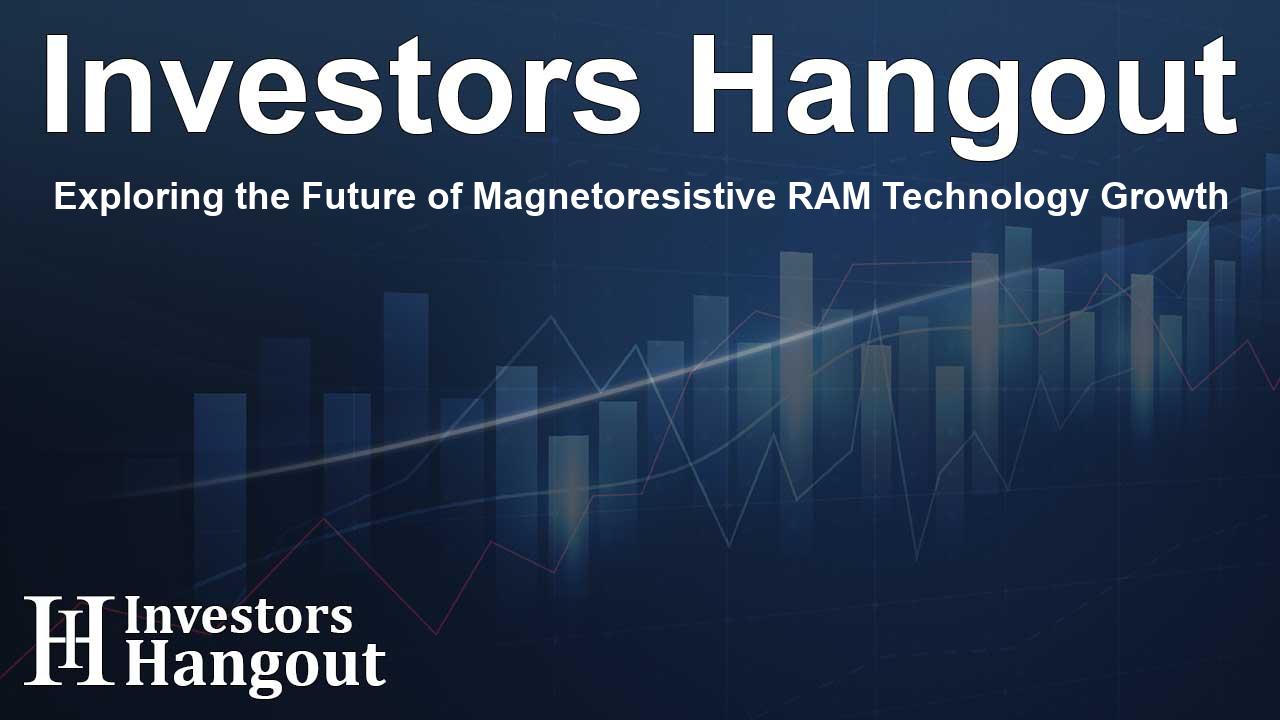Exploring the Future of Magnetoresistive RAM Technology Growth

Understanding the Magnetoresistive RAM Market Trends
The SNS Insider report reveals a remarkable trajectory for the Magnetoresistive RAM (MRAM) market, initially valued at USD 1.24 billion in 2023 and projected to reach an astonishing USD 95.98 billion by 2032. The anticipated growth rate is staggering, with a compound annual growth rate (CAGR) of 62.13%. This growth isn't just about numbers; it's about a transformative shift in the landscape of memory technology.
The Drivers Behind MRAM's Rapid Expansion
Advancements in eMRAM Technology
The rapid development of eMRAM technology is a significant factor propelling the MRAM market forward. As the demand for power-efficient, non-volatile memory solutions escalates, eMRAM is stepping up to meet these needs. With ongoing enhancements and near completion of 8nm developments, eMRAM is setting new standards, outperforming traditional DRAM in speed and efficiency. Its ability to retain data without requiring refresh cycles positions it as an ideal candidate for applications needing speed and reliability, particularly within the burgeoning sectors of automotive technology and artificial intelligence.
Key Market Players Driving Innovation
A strong roster of industry leaders is shaping the MRAM landscape. Companies such as Toshiba Corporation, Everspin Technologies, Samsung Electronics, and IBM Corporation are at the forefront of MRAM advancements. Their extensive R&D investments are paving the way for innovations in memory technology, making MRAM solutions more viable across various applications.
Market Segmentation and Innovative Applications
Types and Offerings of MRAM
Among MRAM technologies, Spin-Transfer Torque MRAM (STT-MRAM) is emerging as the dominant player, accounting for a significant portion of total market revenue. This technology's design allows for quick writing and enhances lifespan, positioning it favorably against other memory alternatives like DRAM and NAND flash. Key applications range from enterprise storage to automotive systems, highlighting its versatility.
Growing Demand in Security and Data Storage
Enhanced security features are another key reason for MRAM's rising popularity. By utilizing advanced Physical Unclonable Function (PUF) circuits within MRAM structures, this memory type boosts data security substantially. Simulations show that MRAM-based PUF circuits outperform traditional models, making them essential for secure data storage solutions in numerous sectors.
Regional Insights into MRAM Market Growth
Navigating Key Geographies
In 2023, North America held a significant lead in the MRAM market, contributing 36% of the global revenue. The region benefits from a robust technological infrastructure and substantial investments in semiconductor research, facilitated by government initiatives like the CHIPS Act. Many major companies are actively developing STT-MRAM and other variants to address increasing demands for speed and reliability.
Asia Pacific is not far behind, with a considerable 26% share of the MRAM market. Countries like China, Japan, and South Korea are heavily investing in R&D, propelling the growth of MRAM technologies through industry giants such as Samsung and Toshiba.
Future Outlook and Market Opportunities
The Path Ahead for MRAM Technology
The future of the Magnetoresistive RAM market appears bright. As advancements in technology continue and more industries recognize the benefits of utilizing MRAM, the market is likely to see even more exponential growth. Organizations are advised to stay ahead of these trends for more insightful product development and strategic investments.
Frequently Asked Questions
What is Magnetoresistive RAM (MRAM)?
MRAM is a type of non-volatile memory that uses the magnetic state of materials to store data, offering speed and durability advantages over traditional memory types.
What factors are driving the growth of the MRAM market?
The growth is driven by the demand for power-efficient, non-volatile memory solutions, advancements in technology, and the need for secure data storage.
Who are the key players in the MRAM market?
Significant players include Toshiba Corporation, Everspin Technologies, Samsung Electronics, and IBM Corporation, all of whom are heavily investing in MRAM technology.
Which regions are leading in MRAM adoption?
North America and Asia Pacific are leading in MRAM adoption, with significant contributions to the global market revenue.
What applications benefit from MRAM technology?
MRAM technology benefits various applications, including enterprise storage, automotive systems, aerospace & defense, and consumer electronics.
About Investors Hangout
Investors Hangout is a leading online stock forum for financial discussion and learning, offering a wide range of free tools and resources. It draws in traders of all levels, who exchange market knowledge, investigate trading tactics, and keep an eye on industry developments in real time. Featuring financial articles, stock message boards, quotes, charts, company profiles, and live news updates. Through cooperative learning and a wealth of informational resources, it helps users from novices creating their first portfolios to experts honing their techniques. Join Investors Hangout today: https://investorshangout.com/
Disclaimer: The content of this article is solely for general informational purposes only; it does not represent legal, financial, or investment advice. Investors Hangout does not offer financial advice; the author is not a licensed financial advisor. Consult a qualified advisor before making any financial or investment decisions based on this article. The author's interpretation of publicly available data shapes the opinions presented here; as a result, they should not be taken as advice to purchase, sell, or hold any securities mentioned or any other investments. The author does not guarantee the accuracy, completeness, or timeliness of any material, providing it "as is." Information and market conditions may change; past performance is not indicative of future outcomes. If any of the material offered here is inaccurate, please contact us for corrections.